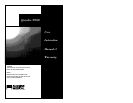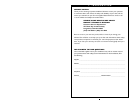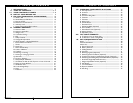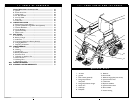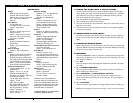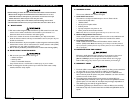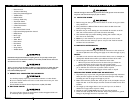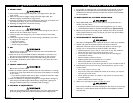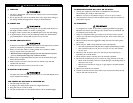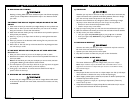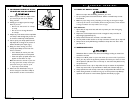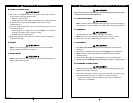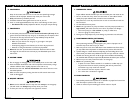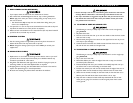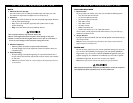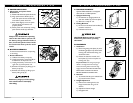
11
930336 Rev. E
C. SOURCES OF EMI
The sources of EMI fall into three broad types:
1. Hand-Held Transceivers:
The antenna is usually mounted directly on the unit.These include:
• Citizens band (CB) radios
• “Walkie-talkies”
• Security, fire and police radios
• Cellular phones
• Lap-top computers with phone or fax
• Other personal communication devices
Note: These devices can transmit signals while they are on, even if not in use.
2. Medium-Range Mobile Transceivers:
These include two-way radios used in police cars, fire trucks, ambulances and
taxi cabs.The antenna is usually mounted on the outside of the vehicle.
3. Long-Range Transceivers:
These include commercial radio and TV broadcast antenna towers and
amateur (HAM) radios.
Note: The following are not likely to cause EMI problems:
Lap-top computers (without phone or fax), Cordless phones,TV sets or AM/FM radios,
CD or tape players.
D. DISTANCE FROM THE SOURCE
EM energy rapidly becomes more intense as you get closer to the source.
For this reason, EMI from hand-held devices is of special concern.
(See C.1 above) A person using one of these devices can bring high
levels of EM energy very close to your chair without you knowing it.
E. IMMUNITY LEVEL
1. The level of EM is measured in volts per meter (V/m). Every power wheelchair
can resist EMI up to a certain level.This is called its “immunity level”.
2. The higher the immunity level, the less the risk of EMI. It is believed that a
20 V/m immunity level will protect the power wheelchair user from the more
common sources of radio waves.
3. The configuration tested and found to be immune to at least 20 V/m is:
Quickie P200 power wheelchair with a right-hand mounted QTRONIX remote
joystick system, 16” seat width, 18” seat depth, dual post height adjustable arm-
rests, elevating leg rests and Gp 24 gel all batteries.
4. The following specialty input devices have an unknown effect on the immunity
level because they have not been tested with the P200 and QTRONIX control
system:
V. EMI (ELECTROMAGNETIC INTERFERENCE)
10
930336 Rev. E
Heed all warnings to reduce the risk of unintended brake release or chair movement:
1. Beware of the danger from hand-held transceivers. Never turn on or use a
hand-held transceiver while power to your chair is on. Use extra care if you
believe that such a device may be in use near your chair.
2. Be aware of nearby radio or TV stations, and avoid coming close to them.
3. If unintended movement occurs, turn your chair off as soon as it is safe to do so.
A. WHAT IS EMI?
1. EMI means: electromagnetic (EM) interference (I). EMI comes from radio wave
sources such as radio transmitters and transceivers. (A “transceiver” is a
device that both sends and receives radio wave signals).
2. There are a number of sources of intense EMI in your daily environment.
Some of these are obvious and easy to avoid. Others are not, and you may not
be able to avoid them.
3. Powered wheelchairs may be susceptible to electromagnetic interference (EMI)
emitted from sources such as radio stations,TV stations, amateur radio (HAM)
transmitters, two way radios, and cellular phones.
4. EMI can also be produced by conducted sources or electro-static discharge (ESD).
B. WHAT EFFECT CAN EMI HAVE?
1. EMI can cause your chair, without warning, to:
• Release its brakes
• Move by itself
• Move in unintended directions
If any of these occurs, it could result in severe injury to you or others.
2. EMI can damage the control system of your chair.This could create a safety
hazard, and lead to costly repairs.
V. EMI (ELECTROMAGNETIC INTERFERENCE)



